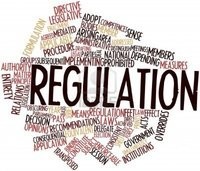The European Medicines Agency (EMA) announced on 15 November 2013 the release of the agency’s first product-specific guidance on the demonstration of bioequivalence for 16 active substances. The draft guidelines have been released for a three-month public consultation period.
EMA releases product-specific bioequivalence guidelines
Home/Guidelines
|
Posted 22/11/2013
 0
Post your comment
0
Post your comment

Bioequivalence studies, consisting of single-dose pharmacokinetic evaluations, are required for the registration of generic drugs in order to demonstrate that they are bioequivalent to a reference medicine. In general, bioequivalence testing provides a useful comparison for different products containing the same active ingredient. Bioequivalence studies therefore play a key role in the development of new generics, as well as in post-marketing authorization variations, fixed-dose combinations, extensions of indication and hybrid applications.
The 16 active substances covered by these draft guidance documents are: capecitabine; carglumic acid; dasatinib; emtricitabine/tenofovir disproxil; erlotinib; imatinib; memantine; miglustat; oseltamivir; posaconazole; repaglinide; sirolimus; sorafenib; tadalafil; telithromycin; voriconazole.
Draft capecitabine product-specific bioequivalence guidance
CHMP/PKWP/EMA/423732/2013
Date: 24 October 2013
http://www.ema.europa.eu/docs/en_GB/document_library/Scientific_guideline/2013/11/WC500154312.pdf
Draft carglumic acid product-specific bioequivalence guidance
CHMP/PKWP/EMA/422457/2013
Date: 24 October 2013
http://www.ema.europa.eu/docs/en_GB/document_library/Scientific_guideline/2013/11/WC500154313.pdf
Draft dasatinib product-specific bioequivalence guidance
CHMP/PKWP/EMA/423718/2013
Date: 24 October 2013
http://www.ema.europa.eu/docs/en_GB/document_library/Scientific_guideline/2013/11/WC500154314.pdf
Draft emtricitabine/tenofovir disoproxil product-specific bioequivalence guidance
CHMP/PKWP/EMA/423726/2013
Date: 24 October 2013
http://www.ema.europa.eu/docs/en_GB/document_library/Scientific_guideline/2013/11/WC500154315.pdf
Draft erlotinib product-specific bioequivalence guidance
CHMP/PKWP/EMA/418988/2013
Date: 24 October 2013
http://www.ema.europa.eu/docs/en_GB/document_library/Scientific_guideline/2013/11/WC500154316.pdf
Draft imatinib product-specific bioequivalence guidance
CHMP/PKWP/EMA/423733/2013
Date: 24 October 2013
http://www.ema.europa.eu/docs/en_GB/document_library/Scientific_guideline/2013/11/WC500154317.pdf
Draft memantine product-specific bioequivalence guidance
CHMP/PKWP/EMA/423734/2013
Date: 24 October 2013
http://www.ema.europa.eu/docs/en_GB/document_library/Scientific_guideline/2013/11/WC500154318.pdf
Draft miglustat product-specific bioequivalence guidance
CHMP/PKWP/EMA/422796/2013
Date: 14 November 2013
http://www.ema.europa.eu/docs/en_GB/document_library/Scientific_guideline/2013/11/WC500154319.pdf
Draft oseltamivir product-specific bioequivalence guidance
CHMP/PKWP/EMA/423665/2013
Date: 14 November 2013
http://www.ema.europa.eu/docs/en_GB/document_library/Scientific_guideline/2013/11/WC500154320.pdf
Draft posaconazole product-specific bioequivalence guidance
CHMP/PKWP/EMA/423719/2013
Date: 14 November 2013
http://www.ema.europa.eu/docs/en_GB/document_library/Scientific_guideline/2013/11/WC500154321.pdf
Draft repaglinide product-specific bioequivalence guidance
CHMP/PKWP/EMA/422421/2013
Date: 14 November 2013
http://www.ema.europa.eu/docs/en_GB/document_library/Scientific_guideline/2013/11/WC500154322.pdf
Draft sirolimus product-specific bioequivalence guidance
CHMP/PKWP/422569/2013
Date: 24 October 2013
http://www.ema.europa.eu/docs/en_GB/document_library/Scientific_guideline/2013/11/WC500154323.pdf
Draft sorafenib product-specific bioequivalence guidance
CHMP/PKWP/EMA/423707/2013
Date: 24 October 2013
http://www.ema.europa.eu/docs/en_GB/document_library/Scientific_guideline/2013/11/WC500154324.pdf
Draft tadalafil product-specific bioequivalence guidance
CHMP/PKWP/EMA/423735/2013
Date: 14 November 2013
http://www.ema.europa.eu/docs/en_GB/document_library/Scientific_guideline/2013/11/WC500154325.pdf
Draft telithromycin product-specific bioequivalence guidance
CHMP/PKWP/EMA/422605/2013
Date: 14 November 2013
http://www.ema.europa.eu/docs/en_GB/document_library/Scientific_guideline/2013/11/WC500154326.pdf
Draft voriconazole product-specific bioequivalence guidance
CHMP/PKWP/EMA/422408/2013
Date: 14 November 2013
http://www.ema.europa.eu/docs/en_GB/document_library/Scientific_guideline/2013/11/WC500154327.pdf
EMA intends these guidelines to enable a consistent approach to the assessment of applications supported by bioequivalence data, particularly generics applications, across all authorization routes, i.e. centralized, decentralized, mutual-recognition and national authorization procedures.
The guidance is intended to help companies design study programmes that meet the expectations of European Union regulators, allowing for better transparency and predictability of the scientific assessment during the authorization process.
For each medicine, the document provides guidance in the form of a table on:
- biopharmaceutical classification system (BCS)
- type of bioequivalence study design
- analyte (parent drug or metabolite) to be evaluated
- bioequivalence assessment.
Comments on the draft guidelines should be made to EMA using the submission form available on the agency’s website and sent no later than 15 February 2014 to pkwpsecretariat@ema.europa.eu.
This is the first wave of product-specific bioequivalence guidance and EMA intends to release more product-specific guidance on the demonstration of bioequivalence in 2014.
Related articles
FDA issues new bioequivalence guidance for generics
Permission granted to reproduce for personal and non-commercial use only. All other reproduction, copy or reprinting of all or part of any ‘Content’ found on this website is strictly prohibited without the prior consent of the publisher. Contact the publisher to obtain permission before redistributing.
Copyright – Unless otherwise stated all contents of this website are © 2013 Pro Pharma Communications International. All Rights Reserved.
Source: EMA
Policies & Legislation
Argentina streamlines drug approval process
ANVISA tackles 24-month backlog in biologicals post-registration petitions
Most viewed articles
The best selling biotechnology drugs of 2008: the next biosimilars targets
Global biosimilars guideline development – EGA’s perspective
New guidance for biologicals in Pakistan and Hong Kong’s independent drug regulatory authority

Home/Guidelines Posted 20/10/2025
Canada poised to remove requirement for Phase III trials for biosimilars

Home/Guidelines Posted 22/07/2025
The best selling biotechnology drugs of 2008: the next biosimilars targets







Post your comment